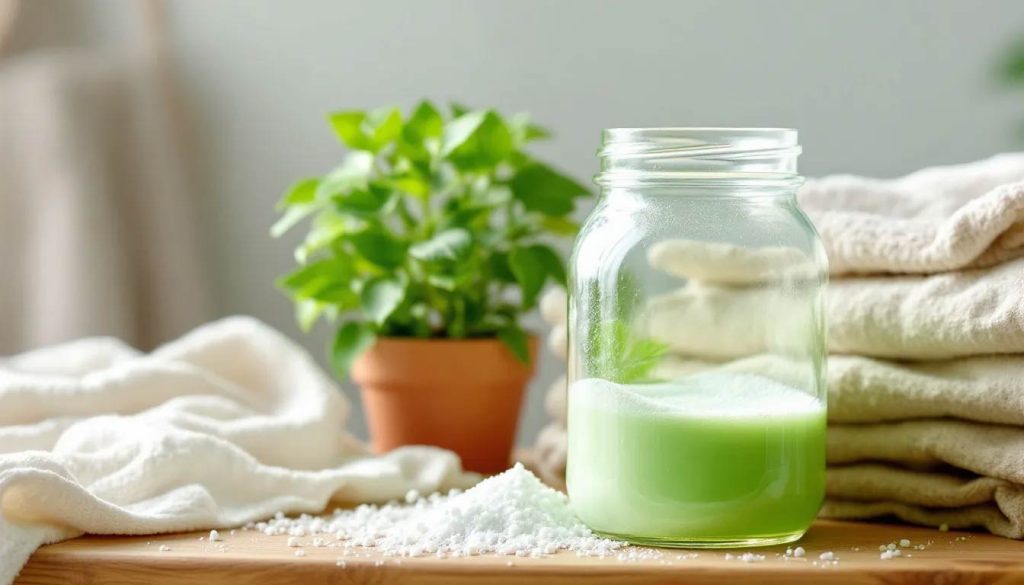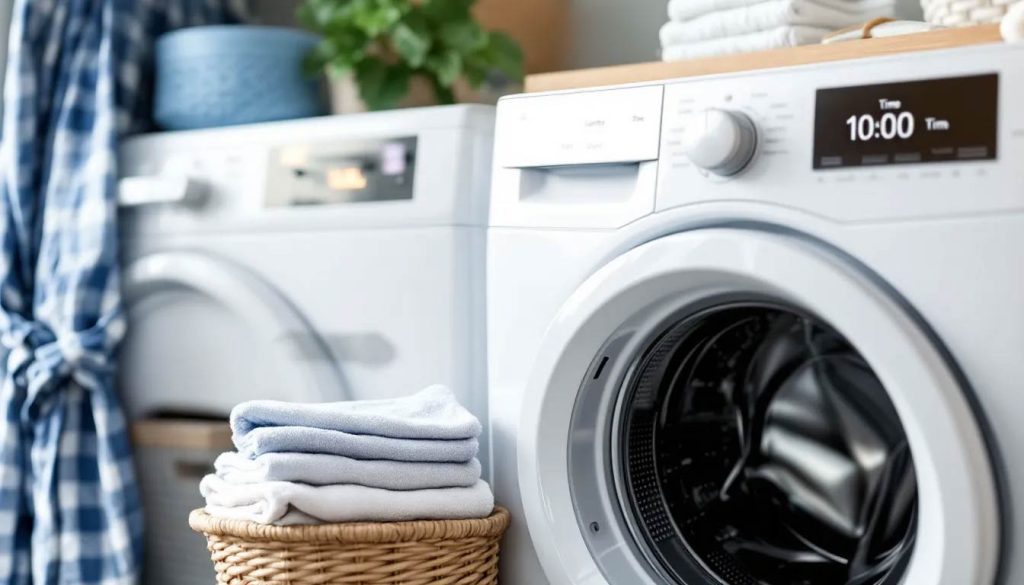Floods can wreak havoc on your wardrobe, leaving you with a soggy mess of clothes. At Oasis Laundry, we understand the urgency of water damage restoration for your cherished garments.
This guide will walk you through the essential steps to rescue your clothes from unexpected floods, helping you salvage as much of your wardrobe as possible.
Swift Action After Flooding
When unexpected flooding strikes your wardrobe, you must act quickly. The first 24 to 48 hours are vital to prevent permanent damage to your clothes. Quick action can save your cherished garments from ruin.
Retrieve Clothes Promptly
As soon as it’s safe, enter the flooded area and start removing your clothes from the water. The risk of irreversible damage increases the longer fabrics remain submerged. You should prioritize delicate items, wool, and silk (these materials are most susceptible to water damage).
Sort and Separate
After you retrieve your clothes, immediately separate them into piles based on color. This step prevents color bleeding, which can ruin light-colored garments. Create separate piles for whites, lights, and darks. Don’t forget to isolate any items with non-colorfast dyes.
Rinse Thoroughly
Before you clean your clothes, rinse them thoroughly with clean, cool water. This step removes mud, debris, and potential contaminants from flood water. You may need to rinse heavily soiled items multiple times. Handle the clothes gently during this process to avoid further damage to weakened fibers.
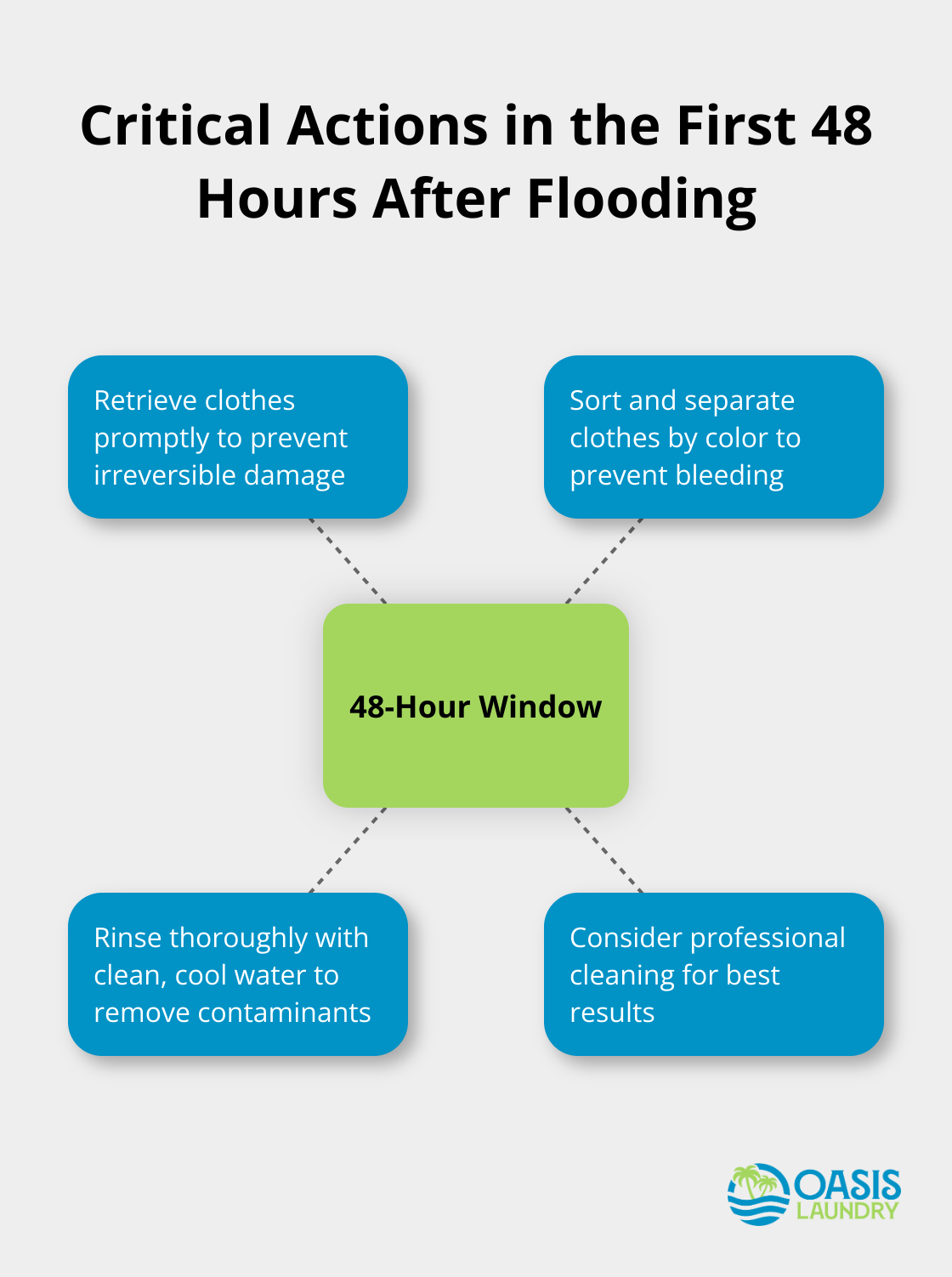
Consider Professional Cleaning
While these immediate steps can help salvage your wardrobe, professional cleaning services can make a significant difference in restoring flood-damaged clothes. Experts in textile restoration ensure that even severely affected garments have the best chance of recovery.
Professional cleaners have specialized equipment and techniques to handle water-damaged textiles. They can address issues like mold growth, stubborn stains, and fabric deterioration that might be challenging to tackle at home.
The next step in rescuing your flood-damaged wardrobe involves proper cleaning and sanitization techniques. These methods will help ensure your clothes are not only clean but also safe to wear after exposure to potentially contaminated floodwater.
How to Clean and Sanitize Flood-Damaged Clothes
After you retrieve your clothes from flood waters, you must clean and sanitize them properly to ensure they’re safe to wear. Flood water often contains contaminants that can pose health risks, so thorough cleaning is essential.
Select the Right Detergent
For flood-damaged clothes, regular laundry detergent might not suffice. The Environmental Protection Agency recommends you use a heavy-duty laundry detergent with disinfecting properties. You should look for products that can kill 99.9% of germs in your laundry, which effectively combat a wide range of microorganisms.
Industrial-strength detergents specifically formulated for flood-damaged textiles are more potent than household varieties. These detergents can effectively remove contaminants and odors associated with flood damage.
Consider Water Temperature
You should wash flood-damaged clothes in hot water whenever possible. The Water Quality & Health Council advises that water temperatures of at least 140°F (60°C) are effective for killing microorganisms, especially with longer contact time. However, you must always check the care label of your garments first. Some delicate fabrics may not withstand high temperatures.
For clothes that you can’t wash in hot water, use the warmest water temperature recommended on the care label. You might need to wash these items multiple times to ensure thorough cleaning.
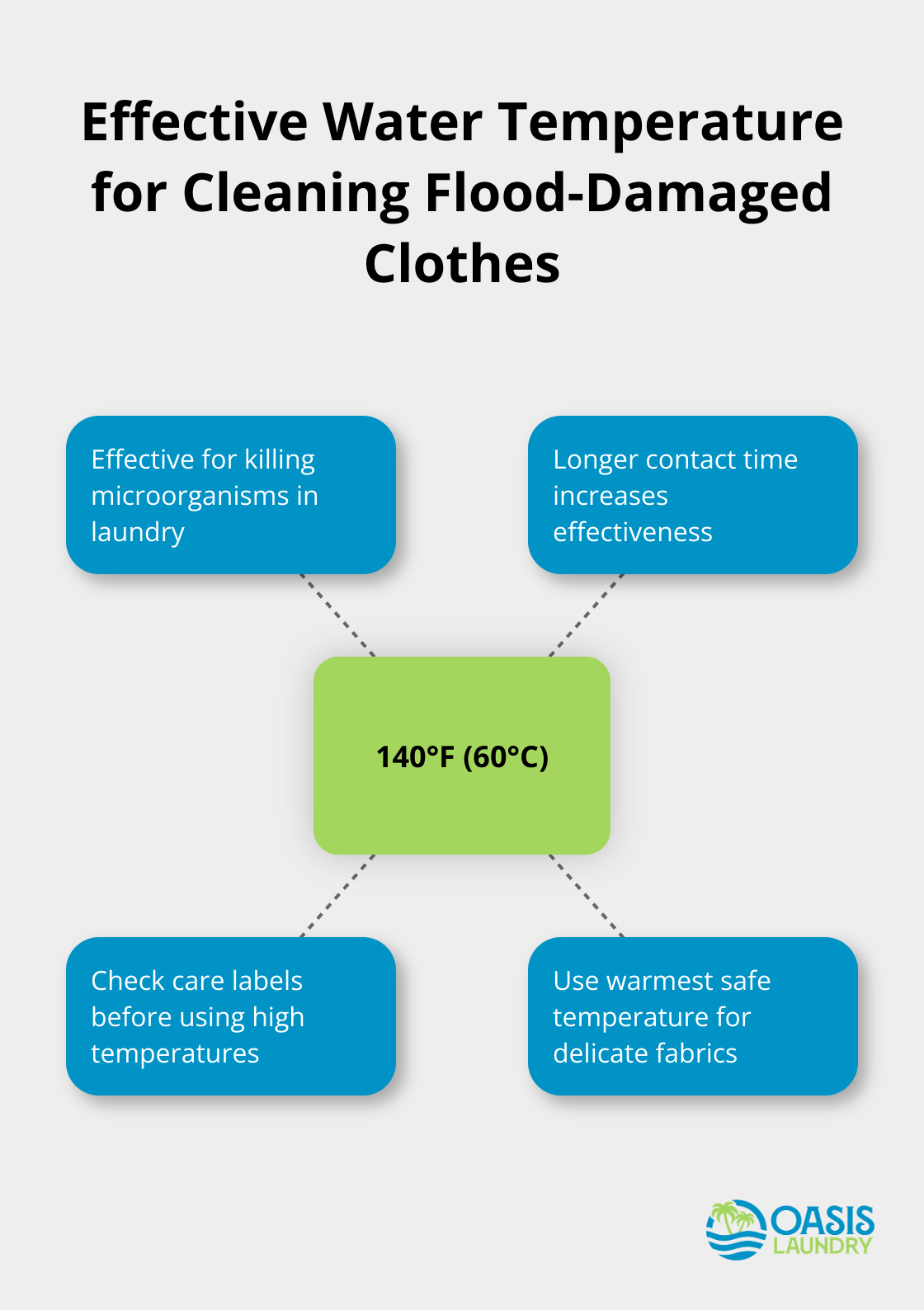
Opt for Professional Cleaning for Delicate Items
Certain items in your wardrobe may require special care. Delicate fabrics like silk, wool, or those with intricate embellishments can suffer severe damage from improper cleaning methods. In these cases, professional cleaning is your best option.
Professional cleaners have access to specialized equipment and cleaning solutions that can effectively clean and sanitize delicate items without causing further damage. They can also address issues like mold growth, which can start to develop within 24-48 hours of water exposure (according to the Federal Emergency Management Agency).
While DIY methods can save many of your flood-damaged clothes, some items are best left to the professionals. Expert textile restoration services for all types of flood-damaged garments can ensure your cherished items return to their pre-flood condition whenever possible.
Now that you’ve learned how to clean and sanitize your flood-damaged clothes, the next step is to dry and restore them properly. This process is equally important to prevent further damage and ensure your garments are ready to wear again.
Effective Drying Techniques for Flood-Damaged Clothes
After you clean and sanitize your flood-damaged clothes, proper drying prevents mold growth and restores your garments to wearable condition. The drying process requires careful attention to detail and varies depending on the fabric type and extent of water damage.
Air Drying: The Gentle Approach
Air drying is often the safest method for drying flood-damaged clothes, especially for delicate fabrics. Allow the textile to dry in the sun to prevent mold growth. When dry, take them to the dry cleaner for cleaning. The dry-cleaning chemicals and steaming can help further sanitize the garments.
For indoor drying, use fans to improve air circulation and speed up the process. Controlling moisture can make your home more energy-efficient, less costly to heat and cool, more comfortable, and prevent mold growth. A dehumidifier can help achieve this optimal range, particularly in damp or humid climates.
Machine Drying: Speed and Efficiency
For faster drying, especially for hardier fabrics like cotton and polyester, you can use machine drying. Use the lowest heat setting possible to avoid shrinkage or further damage to weakened fibers. The Textile Industry Affairs suggests you add a few dry towels to the dryer load to help absorb excess moisture and reduce drying time.
Check clothes frequently during the drying cycle and remove them while slightly damp to prevent over-drying (which can set wrinkles and cause static). Finish the drying process by hanging clothes to air dry completely.
Ironing: The Final Touch
Once your clothes are thoroughly dry, ironing serves a dual purpose: it removes wrinkles and provides an additional sanitizing step. The heat from the iron can kill any remaining bacteria or mold spores that might have survived the washing and drying process.
Set your iron to the appropriate temperature for each fabric type. For an extra boost of sanitization, use the steam setting if available. The Cleaning Institute advises that steam temperatures can reach up to 212°F (100°C), which effectively eliminates most microorganisms.
Professional services (like those offered by Oasis Laundry) include specialized drying techniques and equipment to ensure your garments are thoroughly dried and restored. For items with severe water damage or those requiring extra care, expert teams can provide the attention needed to salvage your cherished wardrobe pieces.
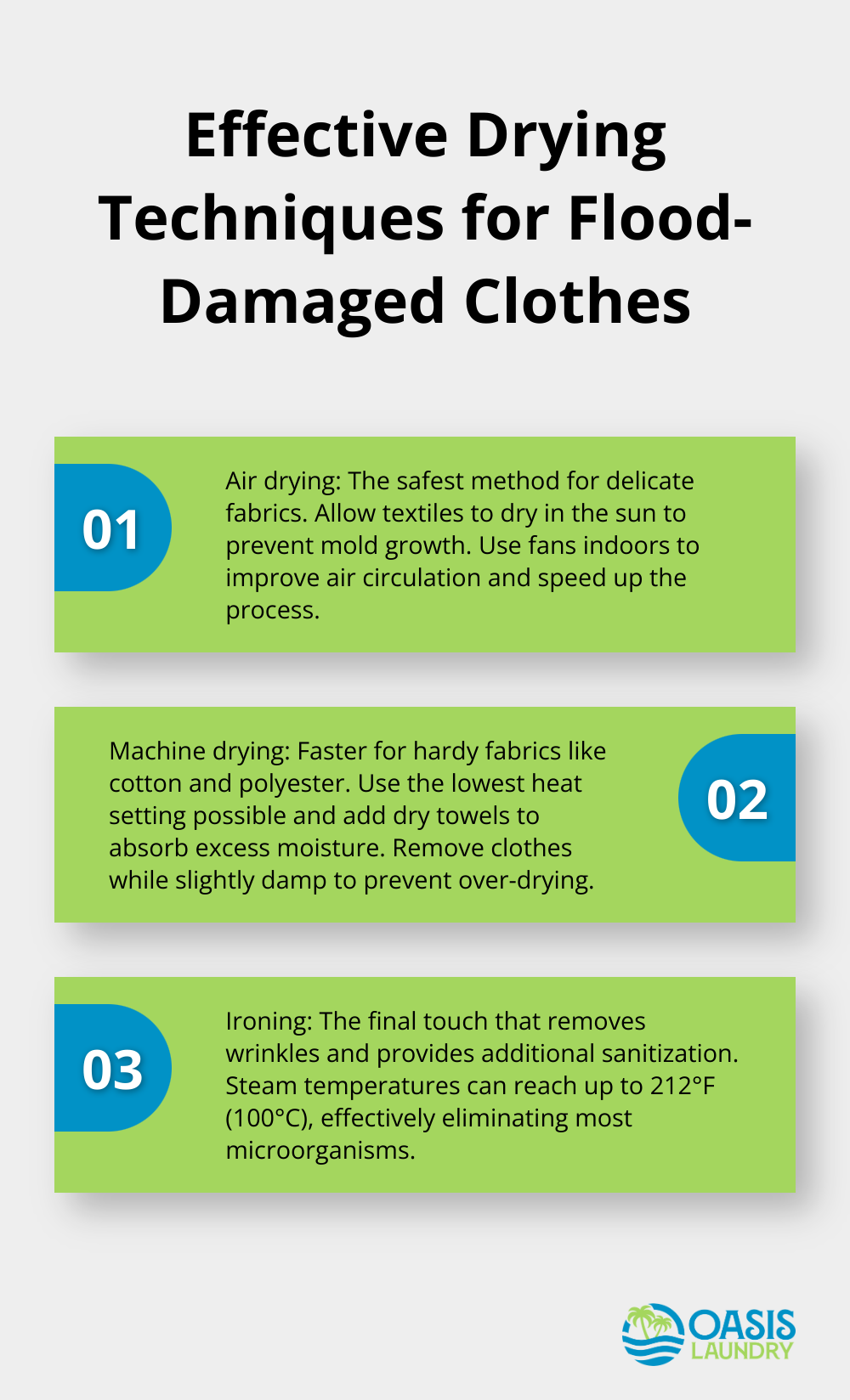
Final Thoughts
Quick action and proper techniques will rescue your wardrobe from unexpected floods. You must retrieve clothes promptly, separate them by color, and rinse thoroughly to minimize damage and increase salvage chances. Proper cleaning and sanitization with appropriate detergents and water temperatures ensure your clothes are safe to wear after exposure to potentially contaminated floodwater.
Professional attention might be necessary for some items. Water damage restoration experts possess specialized equipment and knowledge to handle challenging cases. Oasis Laundry offers comprehensive textile restoration services for items damaged by water, fire, or mold.
Our team of professionals provides the care and attention needed to restore your cherished garments to their pre-flood condition (whenever possible). Swift action is key when dealing with flood-damaged clothes. The sooner you start the restoration process, the better your chances of saving your wardrobe.



